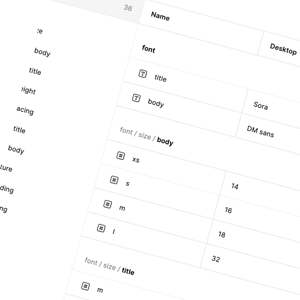With almost 5 million apps available across the Apple App Store and Google Play store, and more being added every week, it’s no longer enough to have a cool idea and a decent execution.
Consumers are facing a staggering choice and need a good reason to choose to put your business in their pocket.
Creating a successful mobile app requires a compelling idea, excellent engineering and a long term plan to support and market your new product.
In this post we’re rounding up some of the considerations for creating an app that is a valuable piece of your digital experience plan, and part of your long term strategic vision and customer, employer or total experience package.
Start with your users to craft an excellent experience
As with all digital experiences, a thorough understanding of your audience is fundamental to creating a successful app. What are your users’ pain points and how will your app solve them?
Understanding your users will also help you make decisions about your development path from the beginning, and set you up for long term success. Creating a big picture vision will help you get the initial structural decisions right and save you costly rebuilds in the future.
-
- What tasks are your users going to complete in the app? Why is this more convenient (or enjoyable) than other ways they could complete the task?
- What other apps and activities will compete with your audience’s attention or allow them to complete similar tasks?
- Are your users demographically more likely to have an iPhone or an android phone (your web analytics might be a good clue)?
- Would they want an app to work on an iPad, android tablet, or desktop mac or PC now or in the future?
- Is your audience local or global? What languages do they speak?
- What accessibility needs do your users have?
Make it engaging enough to return again and again
The value proposition for your app needs to be strong enough to keep users coming back and to remind them to use it regularly. If your user really doesn’t need regular interaction you may be better off investing your budget in making sure your main web experience works well on mobile.
Northumbrian Water knew their customers would benefit from access to their billing on their mobile phone, but added additional valuable content like water saving tips and a gamified community support programme to encourage users to come back more frequently. (Read the case study)
Another way an app could ‘win’ over a web experience is benefitting from contextually appropriate content - for example using location data to personalise the experience, or triggering timely alerts. Overall, consider not just what the technology can do, but how this is useful to your audience.
Define your business model
It’s not enough to just create an app and publish it. It needs to fit in with your business plan.
-
- Does your app exist to support an existing process (e.g. self service billing, updates on projects, an alternative to your ecommerce store) or is it a standalone offering?
- Will you charge for your app or will it be free?
- Will you offer in-app purchases to let users access additional features?
- What team will provide customer support to your app users? Who will respond to reviews on the app store?
- Where will the content come from and who will update it? Do you need a headless solution to feed content to your website, app or other digital experience?
What is your long term plan for supporting the app? You will need bug fixes and to update it periodically to support newer phones and operating systems.
UX, Design, Accessibility
Once you have planned the overall feature set and considered how your app fits into your business model, the fun part starts.
Your app should be easy to use, with a user-friendly interface and intuitive navigation through its features. Avoid breaking the accepted design rules of apps – make sure things are where users expect them to be, and wherever possible test and iterate your ideas with real users. Both Apple and Android offer detailed best practice guidelines and UI toolkits to help developers achieve a seamless experience, but an experienced UX design team with mobile experience can help you find the balance between expected design patterns and custom functionality.
Design needs to be visually appealing but also take into account the variation in screen size and resolution, and the potential for users to ‘break’ your app by changing their settings. Dark mode is an obvious candidate for an alternative design requirement - but what about users who change their iPhone to high contrast mode, or increase their font size to help them see better. Have you considered what happens to your interface when they do this?
The Great Exhibition of the North app won awards for its user interface design - testament to the creative team behind the app, yes, but also to the approach of involving real life users early in the project, so that their needs were met and their tastes and preferences incorporated. (Read the case study)
Accessibility in mobile apps goes beyond button sizes. Can your app be navigated with a screen reader? Does it work in high contrast mode? Have you set it up properly to be viewed with alternate text sizes? Your app development partner should be encouraging you to consider these factors in your approach. Including them from the beginning will save time in the long run, versus trying to ‘fix’ the accessibility later.
An estimated 120 million people in the EU have a disability or age-related internet access difficulty - an audience that you don’t want to automatically exclude through a broken or frustrating user experience.
Performance and reliability
The app should perform well, with fast load times and minimal crashes or bugs. A glitchy app will quickly hurt your reputation and, perhaps worse, make users less likely to continue using it. There are a billion things vying for users' attention and they are less tolerant than ever of a frustrating experience. Monitor and test performance, and pay close attention to reviews and feedback.
Your developers should be looking for performance enhancements right through the process, checking for memory leaks, processing bottlenecks and other performance issues with each build.
You will also benefit from specialist expertise to design a proper infrastructure to support the app as part of your wider digital experience ecosystem - where is the content managed and hosted? Which bits do your team need to be able to change regularly without developer involvement and a deployment to the app store? Considering the employee experience inherent in administering your mobile app will help your team delight your customers and external users.
Beta testing, app store submission and long term support
Deploying website changes is usually all in your control, but when it comes to app updates there are additional hoops to jump through. Each version of your app you deploy needs to go through a review process with the app stores, and can take another 24 hours from approval for your app to appear on all storefronts.
Submissions to Apple’s app store fail 40% of the time for issues relating to app completeness, for example crashes, broken links and placeholder content that has been missed. Make sure you test really thoroughly and don’t forget to turn on any backend services that support the app, before you submit for review. You can use TestFlight to distribute to beta testers, but the app should still be a finished product.
When new versions of the Apple and Android operating systems are released, you may need to update your app to support new features. Your development partner should be keeping an eye on upcoming releases and planning accordingly.
Providing regular updates and maintaining the app to fix bugs, and address user feedback, can help to improve user satisfaction and retention.
Privacy and security
You need to be honest and transparent with what you are collecting user data for, and then look after it appropriately.
The data policy is up to you, but you should be discussing with your app development partner how they are ensuring the app itself is protected - for example through encrypted source code, backend security and API authentication. Apps, like websites, can be tested for their security with penetration testing tools. It may also be appropriate to build in security best practice for your end users, like password policies and requiring 2-factor authentication.
Conclusion
Like any digital experience project, conceiving, designing and building a mobile app can be a complex process. Specialist partners can be hugely helpful in unpicking the layers of decision making and balancing your budget and timescales with your long term vision.
Need support?
From UX research and design, proof of concept work, full mobile app development, to API integration, long term app support and adoption & update of existing apps. Book a call with our team to discuss how we can help.























